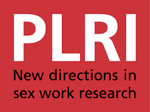Article in the Lancet, Early Online Publication, 11 October 2011.
Background
The aim of Avahan, the India AIDS Initiative, was to reduce HIV transmission in the general population through large-scale prevention interventions focused on high-risk groups. It was launched in 2003 in six states with a total population of 300 million and a high HIV burden. We assessed the population-level effect of the first phase of Avahan (2003—08).
Methods
Population prevalence was estimated by use of adjustment factors from the national HIV sentinel surveillance data obtained annually from antenatal clinics. A mixed-effects multilevel regression model was developed to estimate the association between intervention intensity and population HIV prevalence trends, taking into account differences in the underlying epidemic trends in states and other potential confounders, and to estimate the number of HIV infections averted with Avahan.
Findings
80 (61%) of 131 districts in the six Avahan states received funding from Avahan for HIV prevention, as the only or shared source. Greater intensity of Avahan, measured as amount of grant per HIV population (medians US$24—432 in the six states), was significantly associated with lower HIV prevalence in Andhra Pradesh (p=0·004), Karnataka (p=0·004), and Maharashtra (p=0·008) states; this association was not significant in Tamil Nadu (p=0·06), Manipur (p=0·62), and Nagaland (p=0·67). Overall, we estimated that 100 178 HIV infections (95% CI 25 897—207 713) were averted at the population level from 2003 up to 2008 as a result of Avahan.
Interpretation
The results of our analysis suggest that Avahan had a beneficial effect in reducing HIV prevalence at the population level over 5 years of programme implementation in some of the states. With stagnating funding for HIV prevention globally, our findings support investment in well planned and managed HIV prevention programmes in low-income and middle-income countries.
(abstract authors’ own)
Author:
Marie Ng, Emmanuela Gakidou, Alison Levin-Rector, Ajay Khera, Christopher JL Murray, Lalit Dandona

